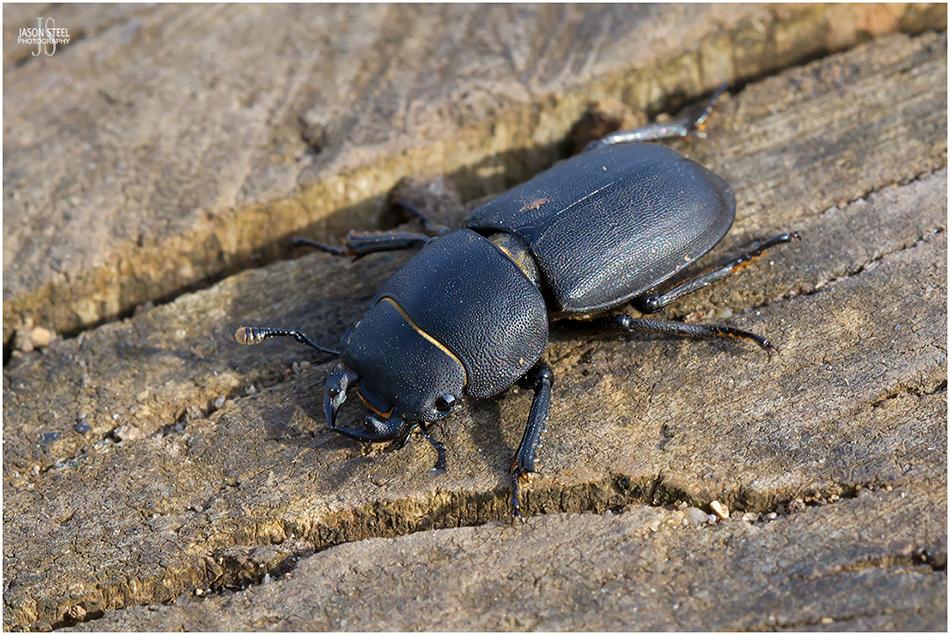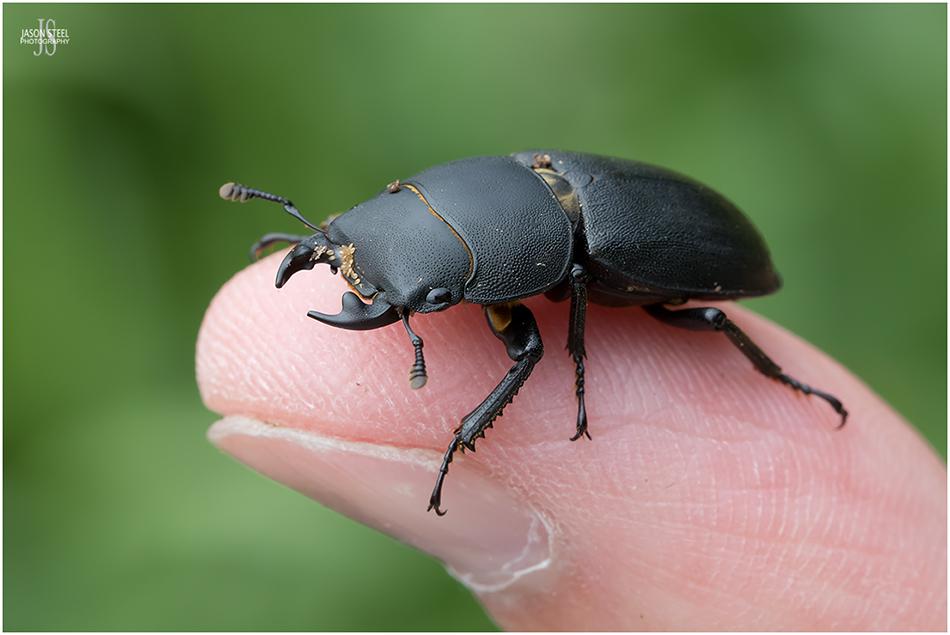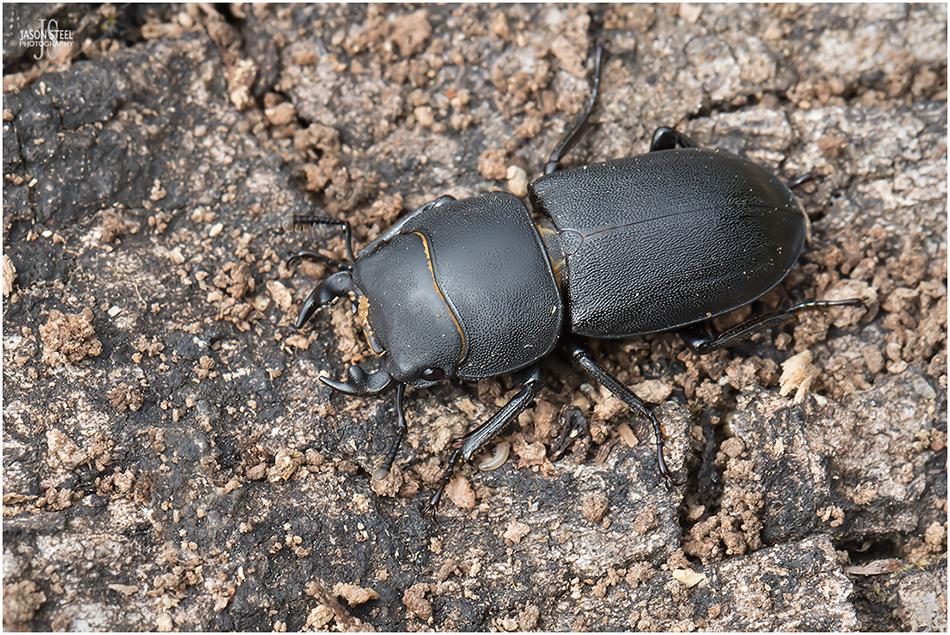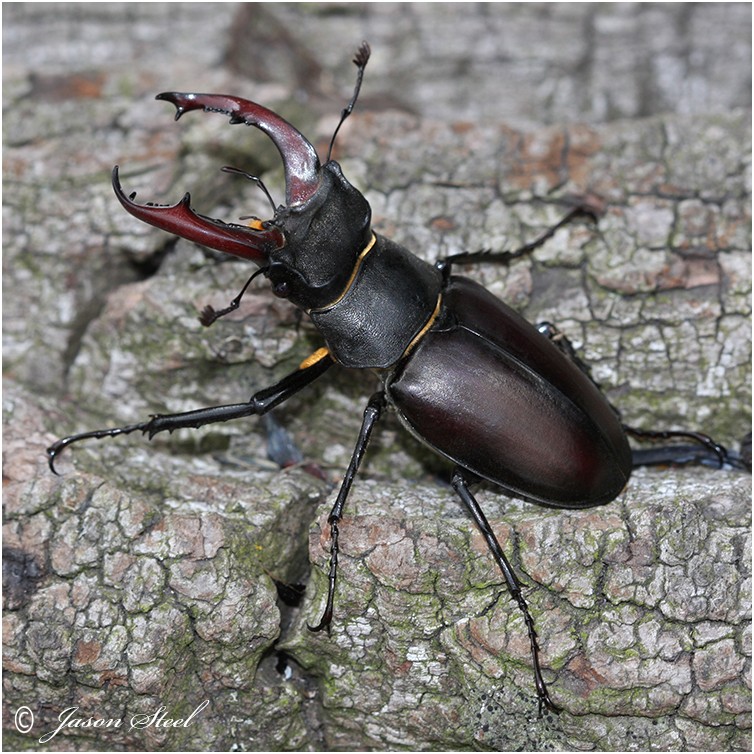
Male Stag Beetle (Lucanus cervus), in my SE London garden.
Stag Beetle (Lucanus cervus)
The Stag Beetle is largest terrestrial beetle in the UK, but sadly their numbers are in decline. Their status is classified as 'Nationally Scarce". Males can be found up to an impressive size of 75mm and very occasionally even 90mm, although 45-60mm is more usual. These beetles are instantly recognisable due to their size. They are uniformly black in colour with chestnut coloured wing-cases. Females can sometimes have maroon coloured wing-cases. The only species that the females are sometimes confused with is the much smaller Lesser Stag Beetle (Dorcus parallelipipedus) which grows to a maximum length of around 30mm. The larvae of the Stag Beetle is a creamy-white colour with a light brown head and grows to an impressive length of around to 80mm, and sometimes even 110mm.
Female Stag Beetles, Lucanus cervus, are usually considerably larger than even the largest Lesser Stag Beetles, Dorcus parallelipipedus. The female is usually fairly close in body-length to the male, minus the large mandibles. However it's not unknown for very small specimens of Lucanus cervus to turn up occasionally. I have seen adult male Lucanus cervus specimens that were incredibly small, less than 30mm in total length! This unusually small size is probably down to the larvae depleting their food source, and being forced to pupate early. I have a dead female Lucanus cervus in my care that's just 33mm in length.
Stag Beetles spend most of their lives living underground as a larvae. This can be for as long as six years feeding primarily from rotting wood from decaying trees and bushes. Stag Beetles usually emerge as an adult beetle around June. Their lives as an adult beetle are short and most live for just six weeks or less. From the moment they emerge their sole purpose is to find a partner to mate with.
Like many of our wildlife species the Stag Beetle is thought to be in rapid decline and is now a protected species. It is commonly believed that the main reason for this decline comes from loss of habitat. This is largely due to over managing sites and the 'tidying-up' of dead wood and rotting trees that provide food and home for these magnificent creatures during the larva stage. Another possible reason for their decline is a recent increase in the umber of Magpies and Crows, which both prey on adult Stag Beetles. Domestic cats are also responsible for a huge number of Stag Beetle fatalities.
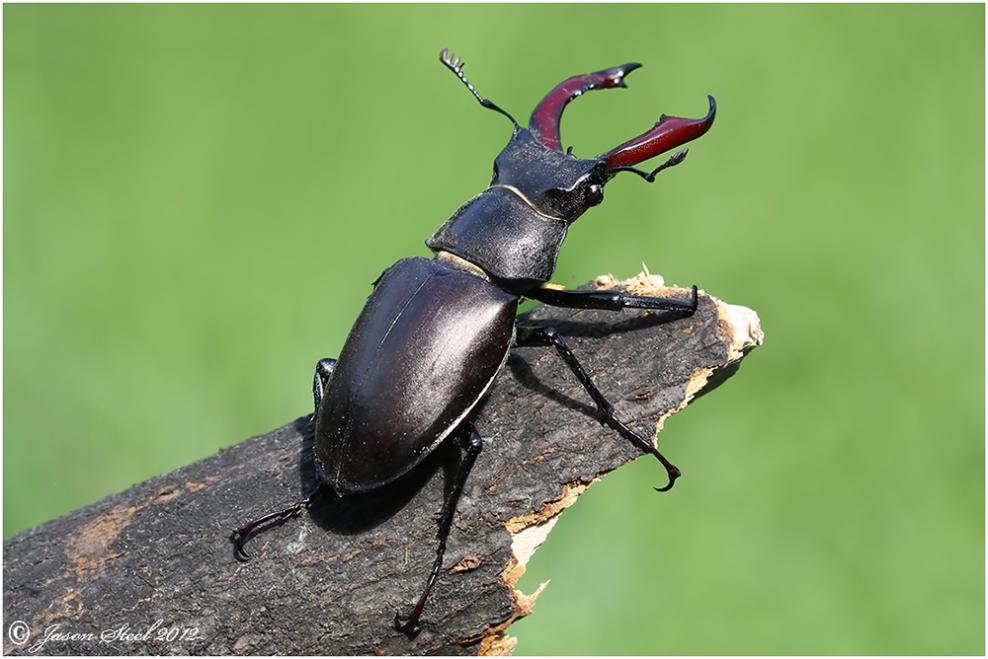
Male Stag Beetle (Lucanus cervus)
It has often been thought that Stag Beetles eat very little or do not feed at all once in the adult beetle form. In studies Stag Beetles have been observed eating over-ripe fruit, nectar and tree sap that can be drunk rather than eaten. Research has shown that Stag Beetles are attracted to ginger. It has also been observed in the wild that Stag Beetles may on rare occasion feed on snails. One has been filmed lifting up a snail and repeatedly smashing it against the ground. The Stag Beetle was then observed to drink up or eat the liquids that ran from the broken snail shell. LINK
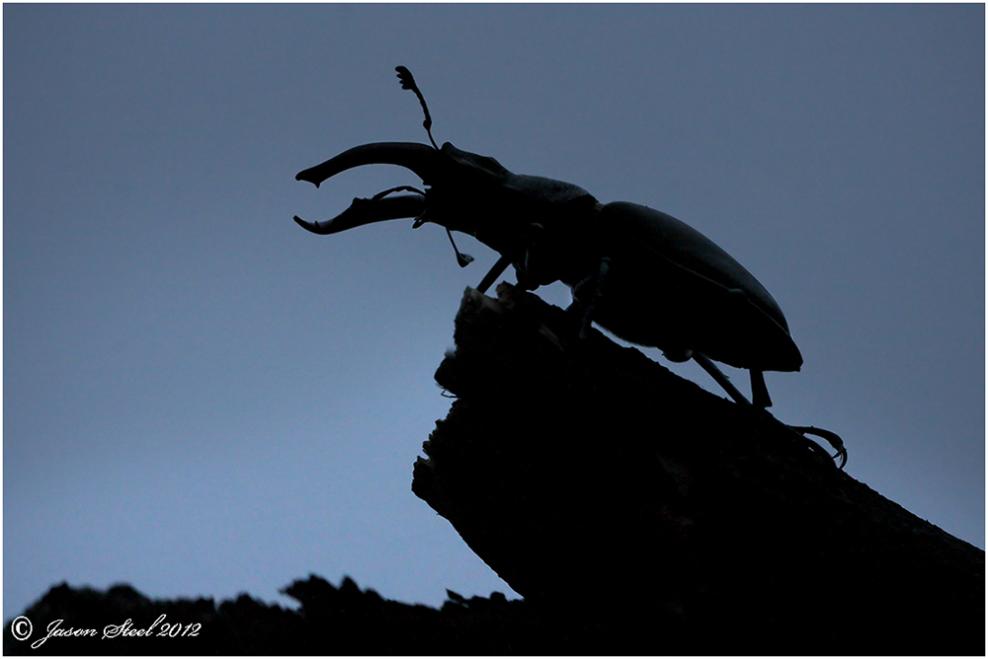
Male Stag Beetle (Lucanus cervus) at dusk.
Stag beetles usually hide themselves away during the daytime and are usually only seen flying at dusk once the sun has set. The best time to see them in flight is on warm, humid evenings during late May - July from 9pm - 10:30pm. They are clumsy fliers and are usually only seen flying if the conditions are right. Their distinctive silhouette, slow and clumsy flight, and large size makes them easily distinguishable from anything else. It is believed that male Stag Beetles will fly up to 500m looking for a mate. Females tend to fly close to their egg-laying site in the hope of attracting the males attention, and don't often fly more than 20m from that site. Females also release pheromones to attract the males. When Stag Beetles pair up they remain embraced together through the night and well into the next day. Mating can last for up to 24hrs. The male will often guard the female until after she has deposited her eggs in rotting wood.
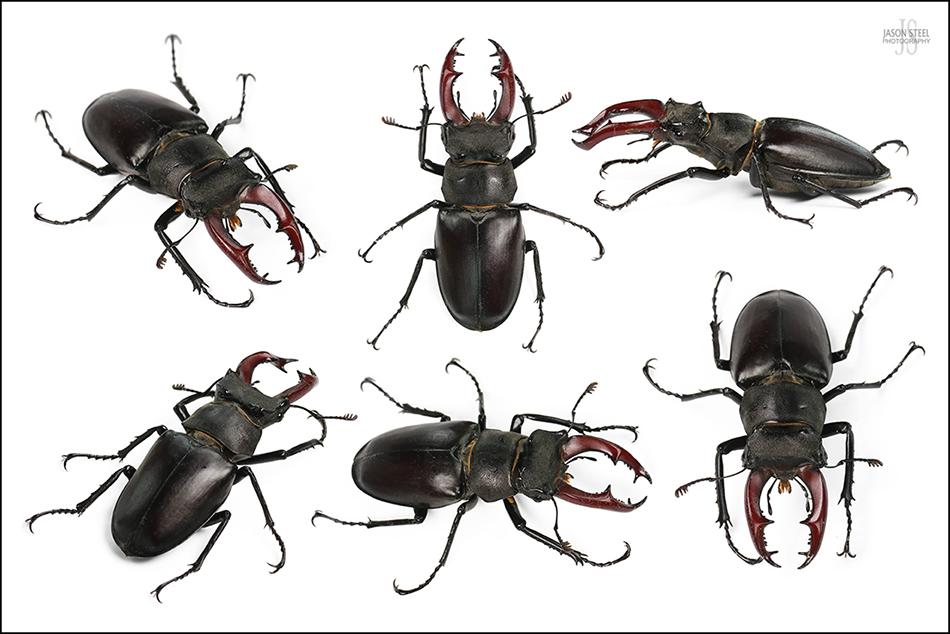
Male Stag Beetle, found in SE London 15th June 2021
How can you help Stag Beetles? Because Stag Beetle larvae feed entirely on rotting wood, the best way to help them is to provide a log pyramid in your garden with the bottom of the logs buried 50cm beneath the soil. The PTES has provided information and tips on this page: Helping Stag Beetles
Or you can download their excellent help-sheet here: Helping Stag Beetles pdf.
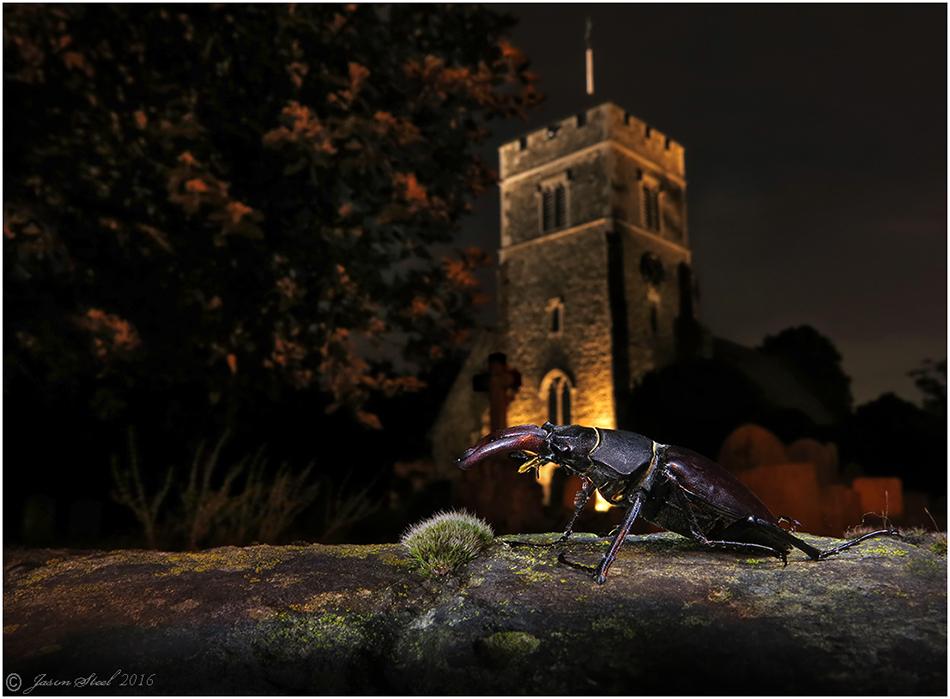
Male Stag Beetle (Lucanus cervus)
There are many old myths and folk-stories that surround Stag Beetles. Stag Beetles have also been known as billywitches, oak-ox, thunder-beetles and horse-pinchers.
Because Stag Beetles are often seen in warm, humid, and stormy conditions, in British folklore Stag Beetles were feared as it was believed that they had the power to summon thunder and lightning storms. It was also once believed that Stag Beetles flew around with hot coals in their jaws setting fire to buildings!
In Germany the Stag Beetle was associated with Thor, the 'god of thunder' and there was a myth that if you placed a stag beetle on your head, it could protect you from being struck by lightening !
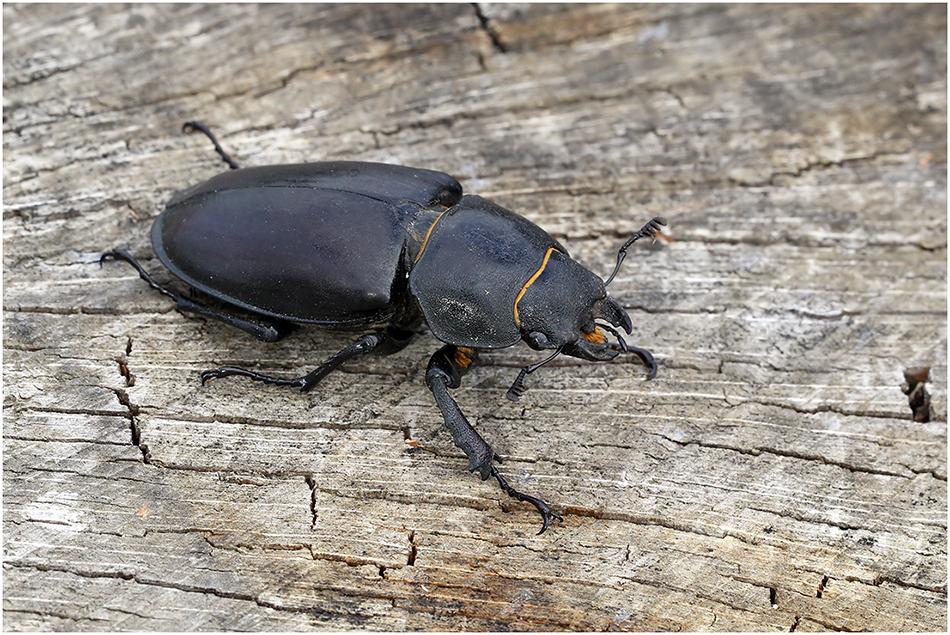
The female Stag Beetle is similar size in size to the male but lacks the large mandibles. They also have a smaller, slimmer head.
REPORT YOUR STAG BEETLE SIGHTINGS
Due to the increased rarity of Stag Beetles in the UK, the PTES are asking for all Stag Beetle sightings to be recorded using one of these links LINK LINK2
It is also believed that Stag Beetles don't seem to be reaching the same size that they once grew to.
When submitting your sightings it would be helpful to measure your Stag Beetle's total body-length and submit that with your records.
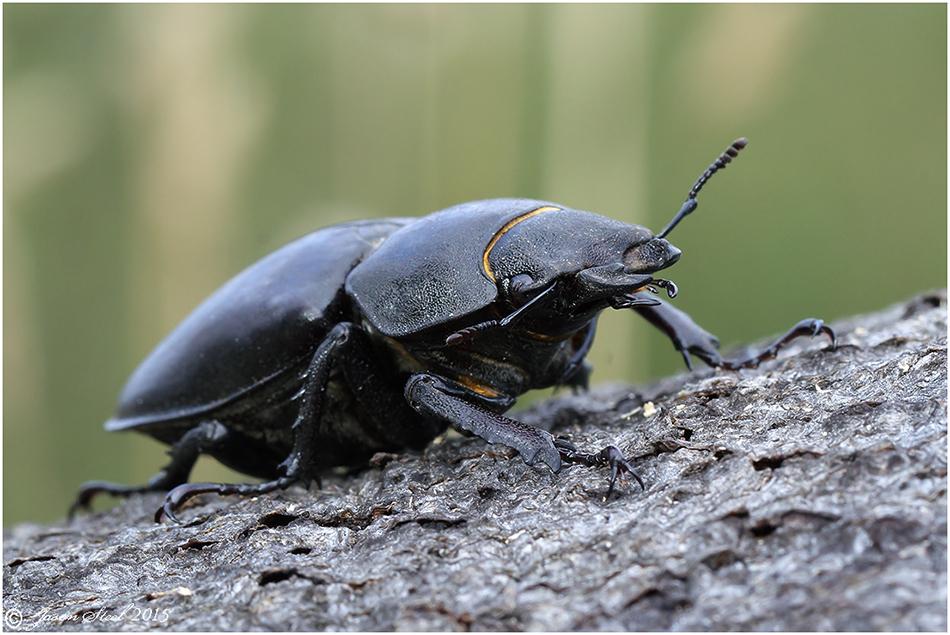
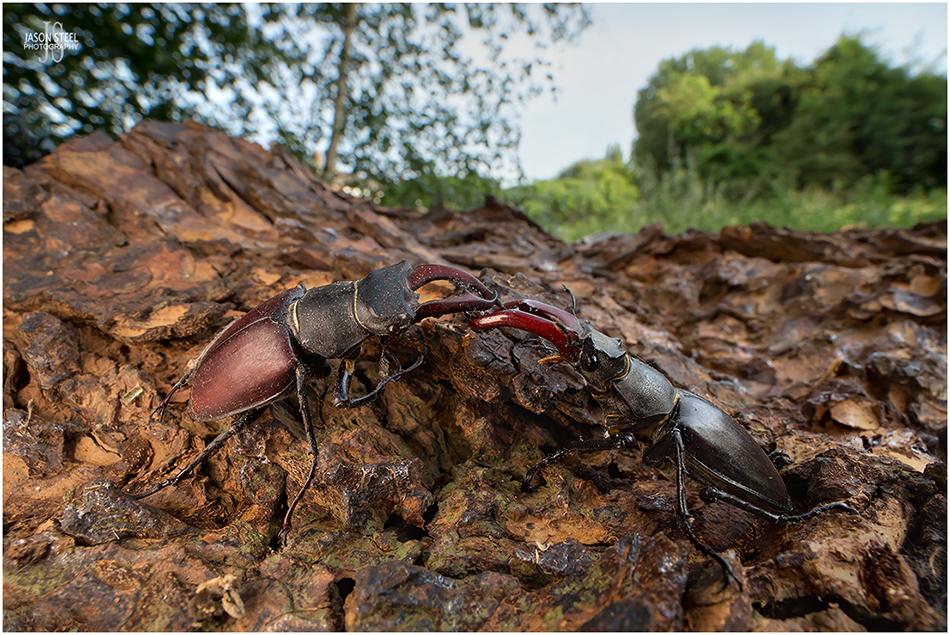
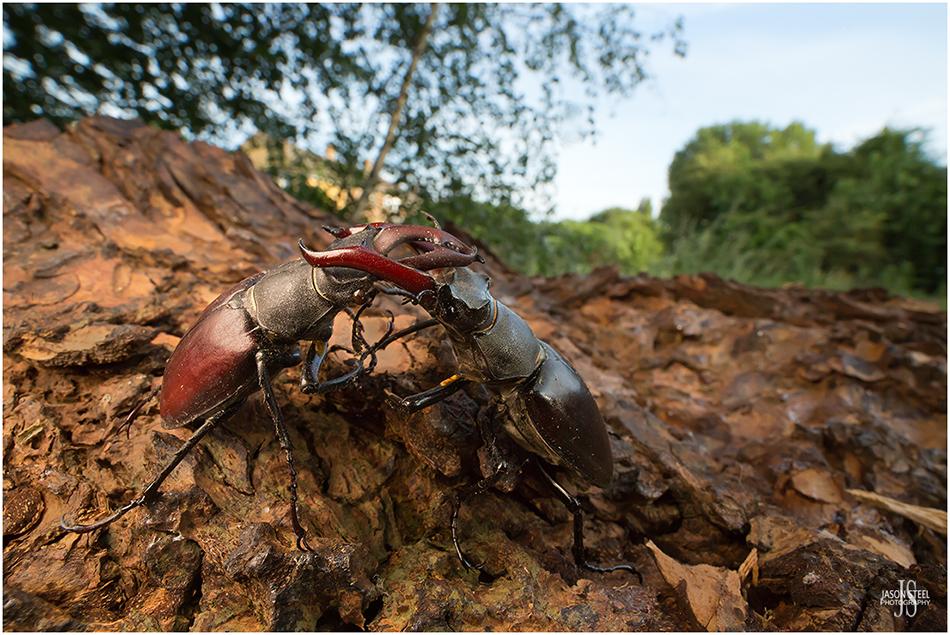
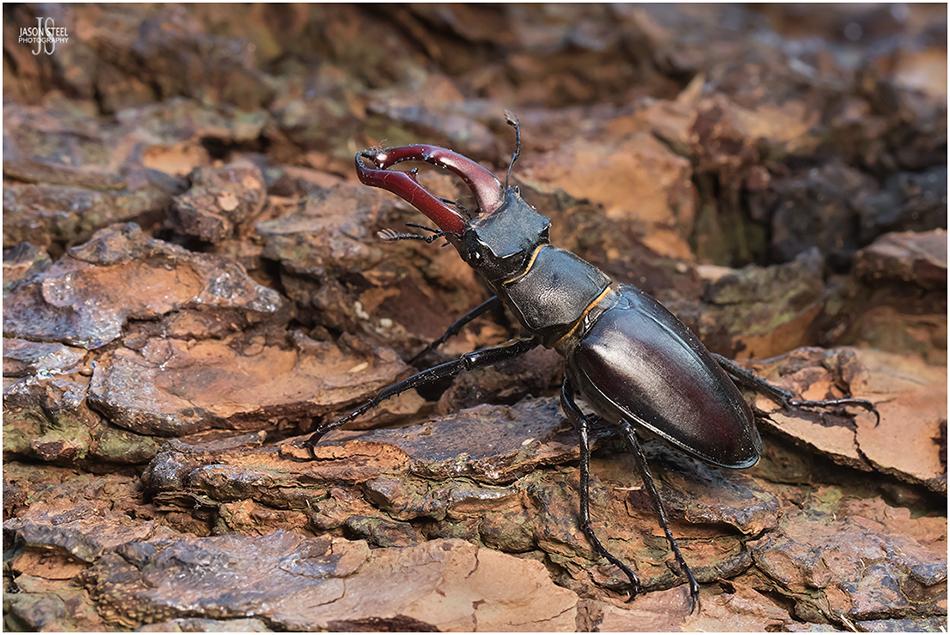
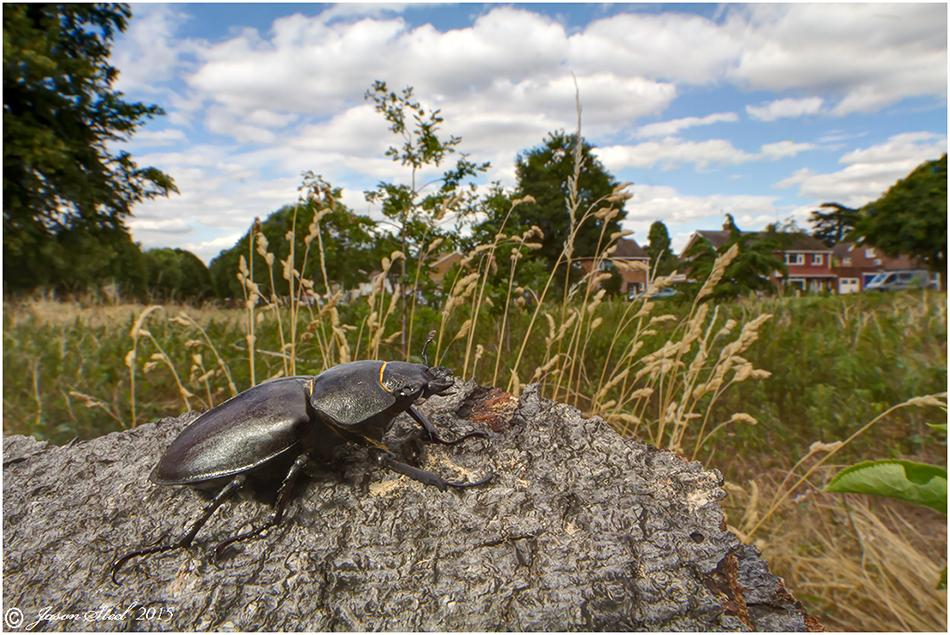
Female Stag Beetle (Lucanus cervus) in deciduous woodland on the SE London / Kent borders 2015
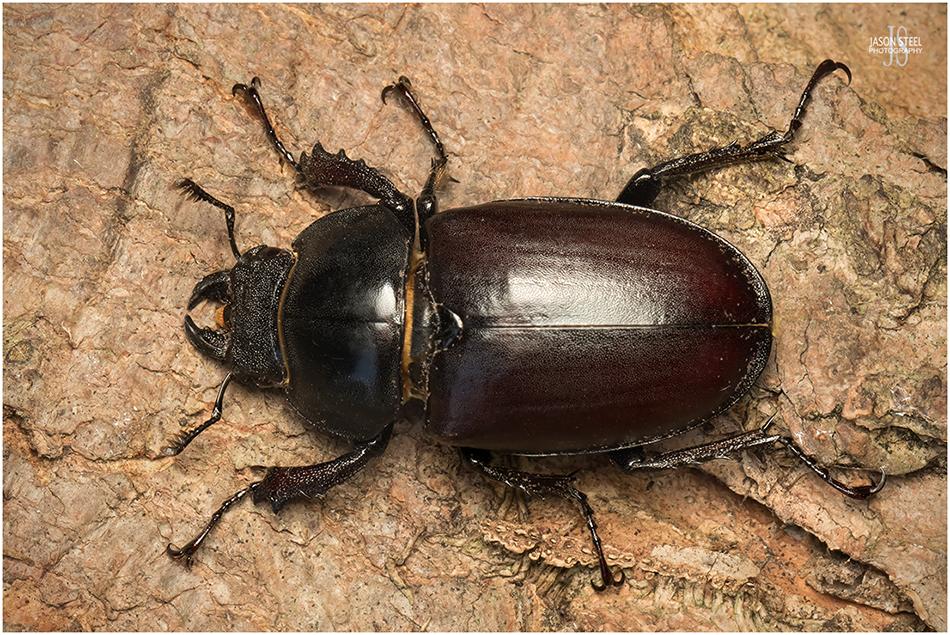
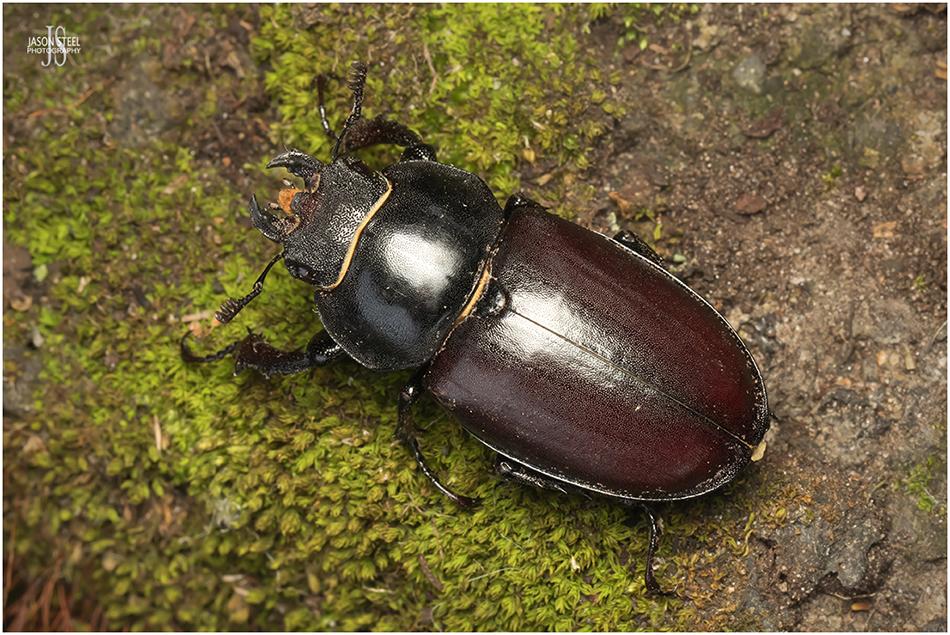
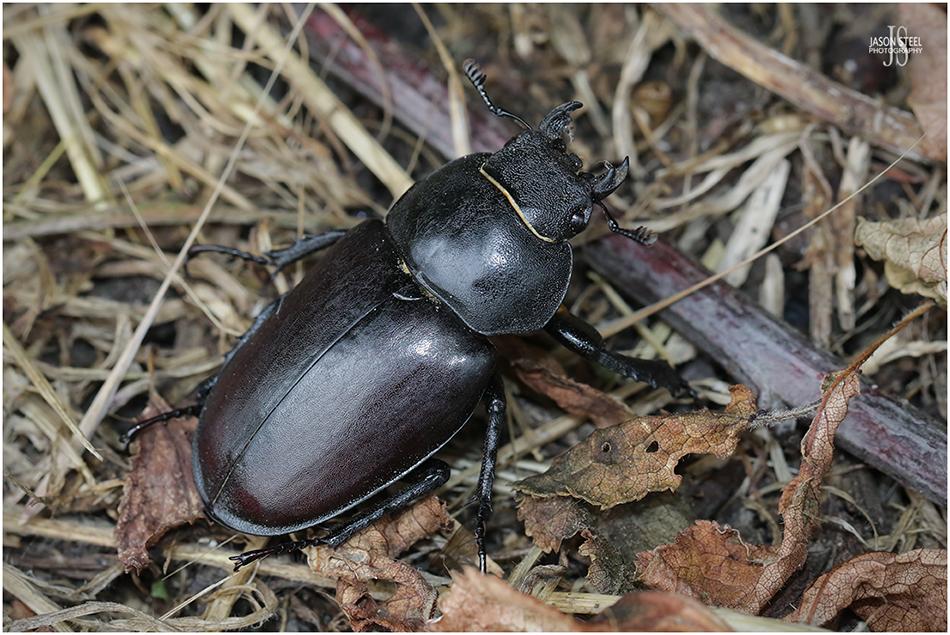
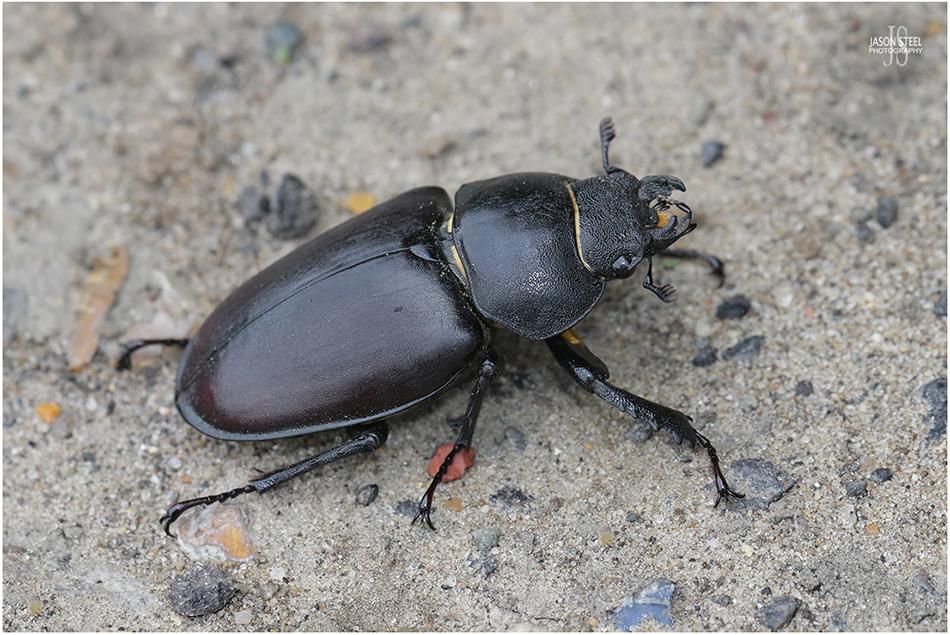
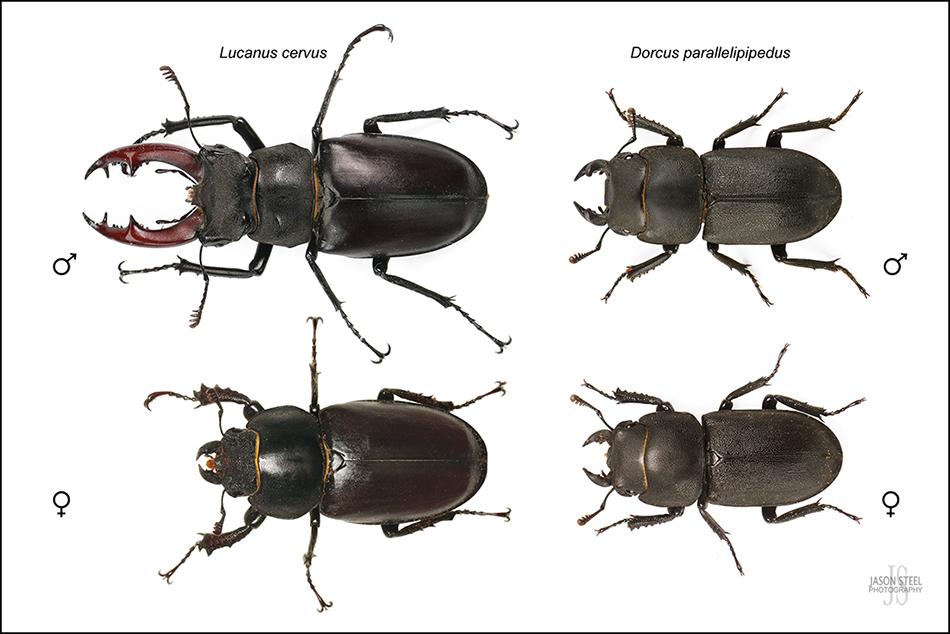
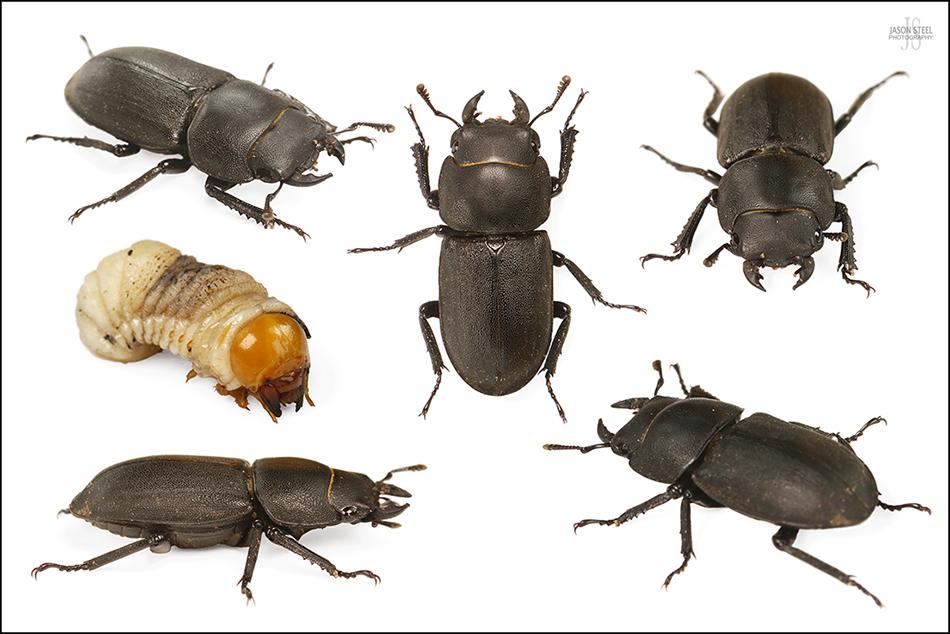
Female Lesser Stag Beetle (Dorcus parallelipipedus), found within a large fallen and rotting tree in SE London woodland, 16th July 2021
Lesser Stag Beetle (Dorcus parallelipipedus)
At first glance the Lesser Stag Beetle looks fairly similar to a female Stag Beetle, although the Lesser Stag Beetle are considerably smaller in size, reaching a maximum length of around 32mm, with 25mm being the usual. Occasionally specimens have been known to reach 40mm. Lesser Stag Beetles also have a flatter appearance when viewed from the side, and can usually be distinguished by their matt black elytra, when compared to the satin chestnut-brown coloured elytra of the larger Stag Beetle. Occasionally Lesser Stag Beetles can also be found in a chestnut brown colour, especially with newly emerged teneral beetles. Any red colouration usually fades to black very quickly, but can take 1-4 weeks of the beetle emerging. The legs are also longer and more spindly-looking on the Stag Beetle when compared to those of the Lesser Stag Beetle, and the Stag Beetle has larger claws at the end of its legs. The head of the female Stag Beetle is much more narrow than its thorax. However, the width of the Lesser Stag Beetle’s head is much closer to that of its thorax.
Female Lesser Stag Beetles usually exhibit two small raised tubercles in the middle of the upper surface of their head. Some sources claim that these tubercles are always present on female Dorcus parallelipipedus, but as one can see from the female specimens that I've photographed this isn't always the case. I wonder if there could be different sub-species of Dorcus parallelipipedus in the UK?
Both species are found in similar environments of woodland and gardens with large trees and both species also feed off decaying wood and plant matter in larvae form. However, Lesser Stag Beetle larvae usually feed on rotting wood above ground level, whereas the Stag Beetle larvae feed on rotting wood below ground level. Both larvae look very similar and can be difficult to tell apart. The larvae of Stag Beetles tend to be considerably larger than those of the Lesser Stag Beetle, but there are exceptions to this rule. Looking closely at the larvae can reveal subtle differences though. The spiracles on the larvae of both species are C-shaped, and all face the same direction, but the Lesser Stag Beetles tend to have more curved spiracles. The head and gut contents of the Lesser Stag Beetle larvae tend to be lighter in shade due to their diet not consisting of soil-rich rotting wood.
Adult Lesser Stag Beetles feed mainly on sap but they can sometimes be found together with their larvae feeding on rotting wood.
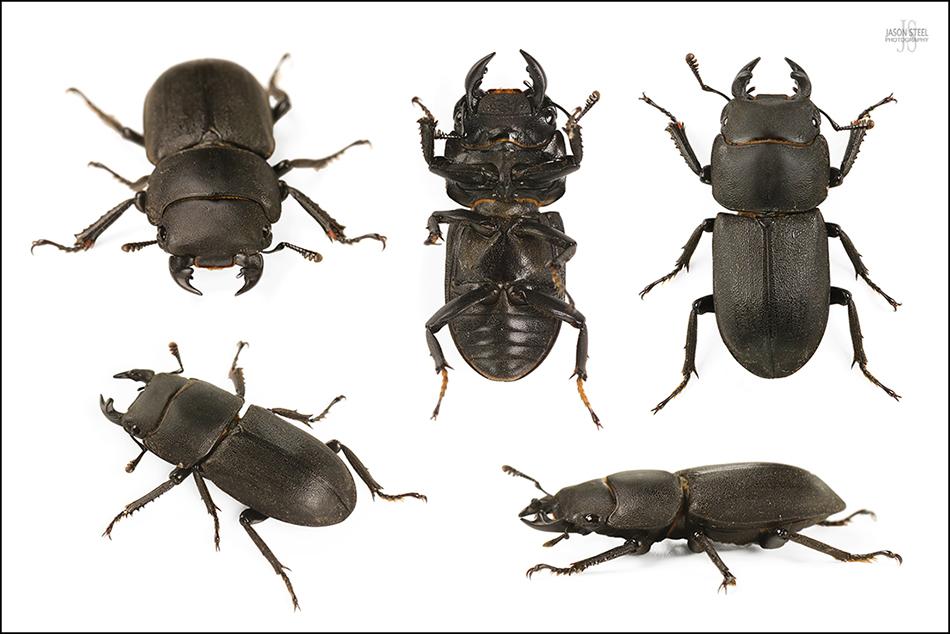
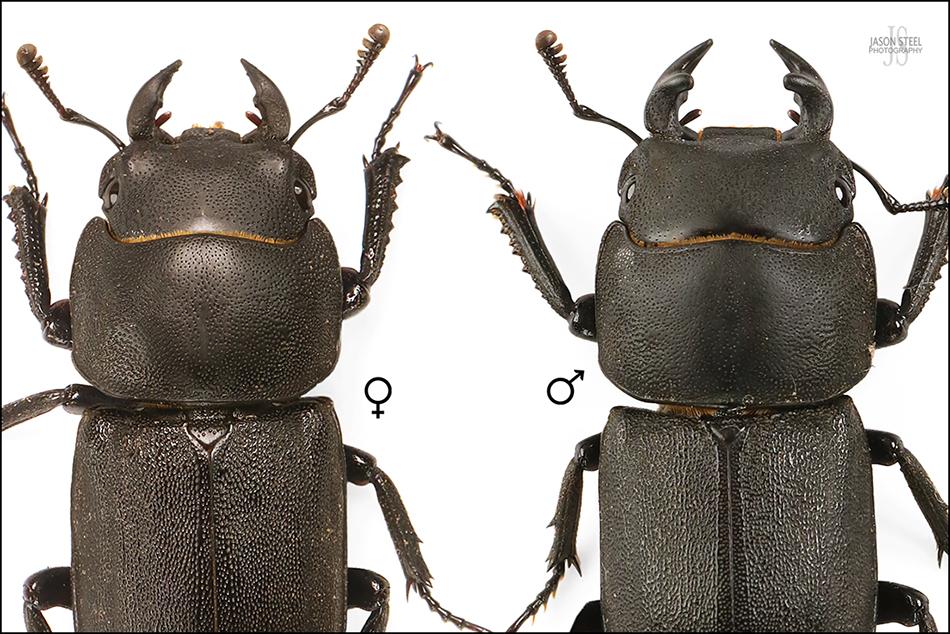
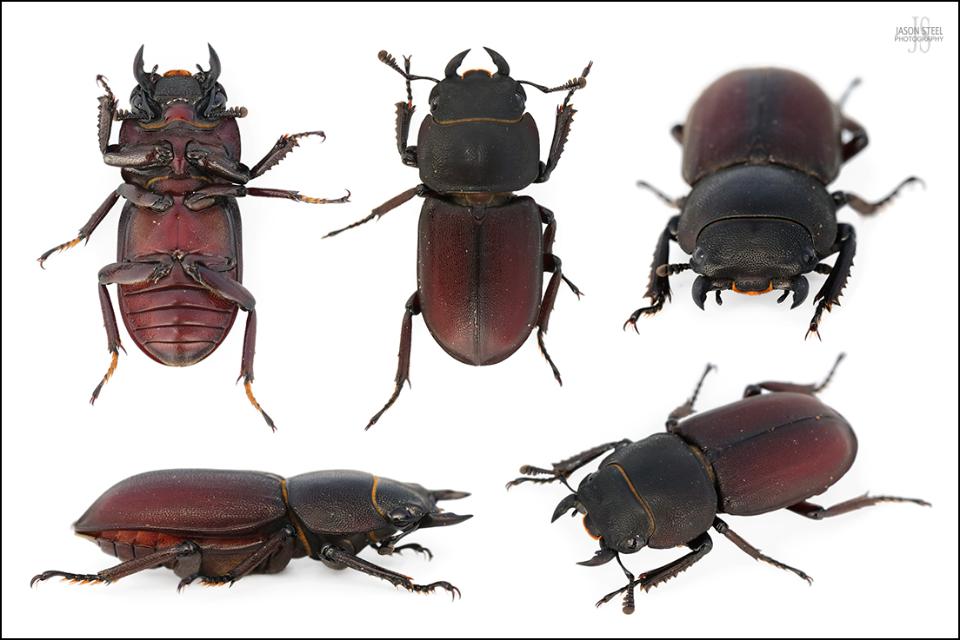
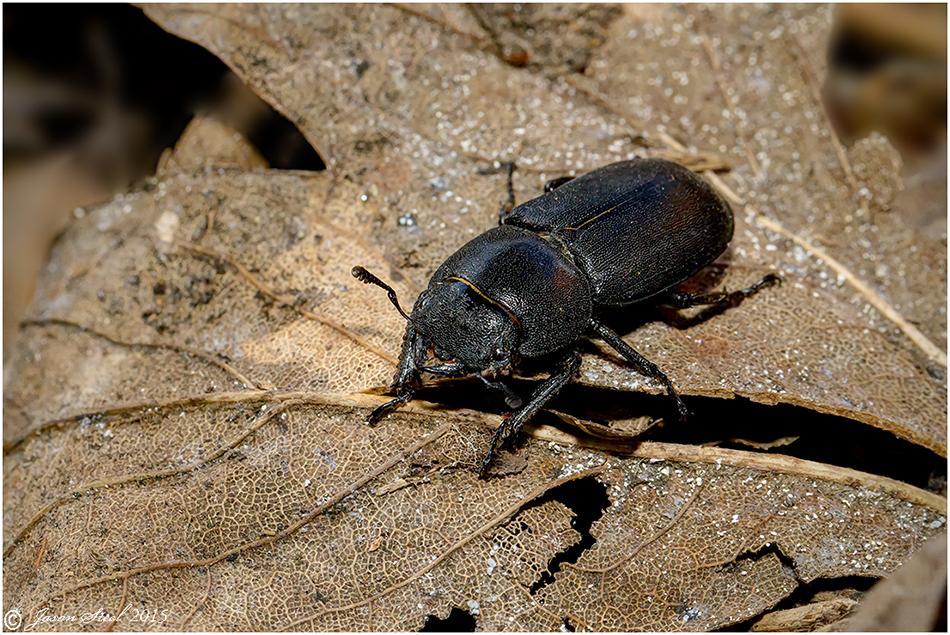
Female Lesser Stag Beetle (Dorcus parallelipipedus)
The Lesser Stag Beetle develops quicker than the larger Stag Beetle, and is usually ready to emerge as an adult beetle after around 1-2 years, but some specimens may take 3 years. Adult beetles then usually live for a further 1-2 years, and sometimes several years, unlike the larger Stag Beetle which only lives for just a few weeks as an adult beetle.
